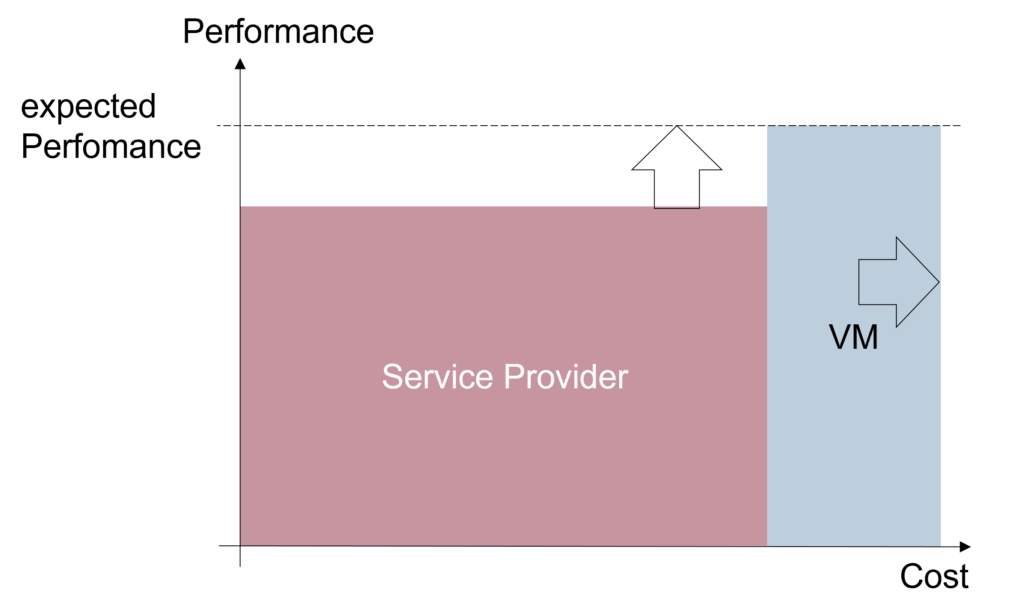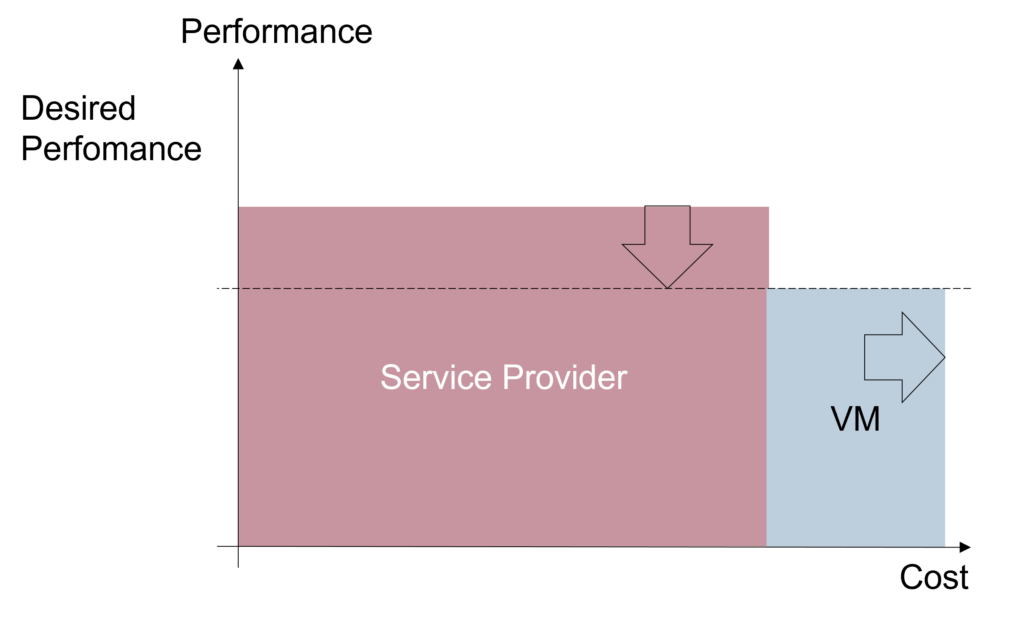When having done IT-Outsourcing – measuring success correctly is not easy. In most companies, the success of IT outsourcing is measured by the cost savings realized. It must be ensured that the scope and quality of the service also meet the customer’s requirements. After outsourcing, internal IT checks this based on SLA reports from the service provider: it must ensure that the service provider’s performance is “correct”. However, the effort and efficiency of internal provider management is often not taken into account when determining outsourcing success. In the following, we show how a holistic measurement of success can look like. It not only takes into account the performance of the external service provider. It also considers the performance of the vendor management in the evaluation.
When measuring outsourcing success, most companies focus exclusively on the quality and costs of externally provided services. This means, focus is only on the performance and costs of service providers. Vendor management is often not included in this analysis: This has a significant influence on the performance of the services and also represents an additional cost component that must be taken into account when determining the total cost of ownership (TCO) of IT outsourcing.
In the following, we will first take a closer look at the dependencies between service provider performance and vendor management performance. We will then take a look at how to measure the success of IT outsourcing on the basis of key performance indicators (KPI), taking vendor management into account.
Dependence between provider and vendor management performance
Ideally, the service provider always provides its services at the service level agreed in the contract. Vendor management controls the provider with little effort. Additionally it ensures that the overall IT service for the company is always in line with customer requirements. Therefore it has to take appropriate measures to integrate all internal and external services (see figure 1).

Figure 1: Ideal scenario – high performance of the service provider and vendor management (VM)
In practice, things often look different: There are always situations in which a provider falls short of the agreed service level.That means, the performance of this provider is too low. Now vendor management must take appropriate additional control measures to ensure that the provider better meets its contractual commitments.
The vendor management effort (and thus the vendor management cost) increase (see figure 2).

Figure 2: low performance of the service provider – rising cost for vendor management
If things go badly with a provider for a longer period of time, the effort (and therefore the costs) in vendor management increase: Discussions increase, conflicts and escalations accumulate. This is particularly true if the vendor management is not set up efficiently. In this case its (low) performance is not sufficient to turn around the poor quality of the external service. In this situation, the performance of the provider may drop further (see figure 3).

Figure 3: low performance of the vendor management deteriorates service provider performance
Vendor management must therefore have sufficient performance of its own to bring the provider up to the agreed performance level. This can be done by using suitable control measures, especially in the event of service level deviations.
Measurement of outsourcing success
Let us now look at how the success of outsourcing can be measured. Usually KPIs are used for this purpose. The dependency between provider performance and vendor management performance/costs that has just been demonstrated makes it clear that outsourcing success cannot be depicted solely by measuring the performance of one party – i.e., only the service provider.
The “correct” set of KPIs must therefore reflect the performance of both parties. That is the basis to provide an accurate picture of the current situation. But which KPIs are the right ones to measure success? This depends on the outsourcing objectives, which are usually defined as part of the sourcing strategy: The KPIs and target values to be achieved are derived from these objectives. The set of KPIs should be manageable, but adequately reflect the objectives. Ideally, KPIs that reflect the performance of both parties are combined with those that only represent the performance of one party.
For example, if the following objectives are defined for a “Workplace Service” outsourcing measure:
- the reduction of cost of ownership (TCO) of the affected IT service
- maintaining the performance of the IT service after outsourcing.
Then these goals can be made measurable by the following KPIs, among others:
(1) KPI TCO after outsourcing
Costs of external services +
Costs of internal provider management.
The cost share of internal provider management attributable to the external services under consideration must be used here. If the quantification of the target is a 10% reduction in the TCO of the services compared with the TCO before outsourcing, the
target value (TCO external services) = TCO services before outsourcing * 0,9
(2) KPIs for performance after outsourcing
For example, one KPI of service quality after outsourcing that reflects the performance of both parties is the provisioning time for a new PC:
Provisioning time for new PC =
Duration for internal service request acceptance incl. approval +
Duration for external PC delivery and installation
This KPI implicitly measures the performance of vendor management: Vendor management has end-to-end responsibility and must ensure that the internal and external providers each deliver the required performance and also work together smoothly to always meet the required provisioning time.
The quantification for this KPI is already included in the target definition, as the performance is to remain the same after outsourcing:
target value (PC deployment time external services) = PC deployment time services before outsourcing
This KPI, which maps the performance of both parties, can now be supplemented by others that only map the performance of one party. For example, this could be the duration of the initial provision of a client application on a PC if the service request is handled solely by the service provider.
Conclusion: IT-Outsourcing – Measuring Success Correctly
The success of IT outsourcing should be measured by the degree to which the sourcing goals are achieved. Internal IT has a significant influence on this success through vendor management: If service providers are managed efficiently and processes involving internal and external parties run smoothly, then the planned benefits for the company’s own IT customers can also be realized. That is why the performance of vendor management must be taken into account when determining the benefits of services. The degree to which sourcing goals are achieved can be measured using the “correct” set of KPIs. They adequately have to reflect the performance of the service provider and vendor management.







